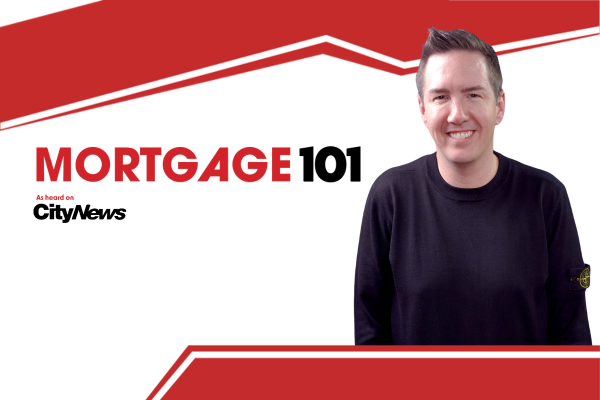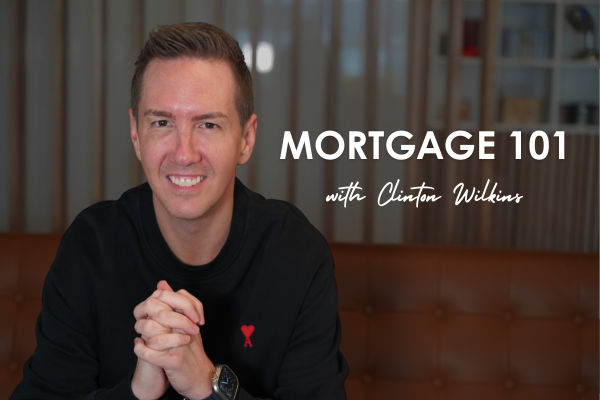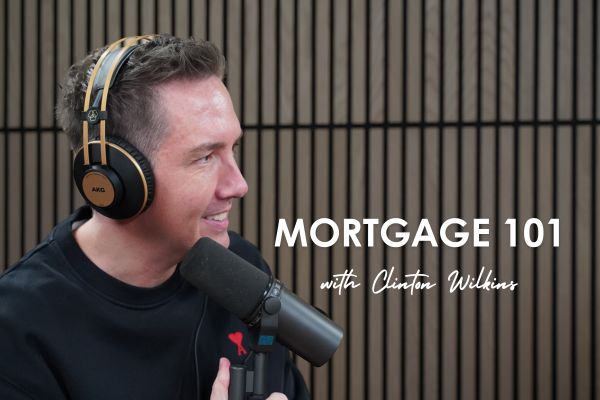Todd Veinotte and Clinton Wilkins discuss the evolving landscape of mortgage lending, highlighting its complexities and the importance of staying informed.

Mortgage 101 – Qualifying for your First Home
If you’ve been thinking of where you are on the checklist of qualifying for your first home, Clinton and Todd get into the specifics this episode! From the mortgage rule changes for first time homebuyers, to the stress test, and qualification requirements, your Mortgage 101 hosts chat about everything you need to consider when taking out your first mortgage.
Todd Veinotte
You’re listening to Mortgage 101, your guide to homeownership with Clinton Wilkins and myself, Todd Veinotte,
Clinton Wilkins
In this episode, changing terms to qualify for a mortgage that will affect you in the future.
Todd Veinotte
What kind of income do you need to qualify!
Clinton Wilkins
When these changes go into effect.
Todd Veinotte
And some quick math you can do at home to determine if you qualify. For those who are just tuning in, we spent the first part of the show talking a lot about the federal budget. So just kind of a couple of minute recap on that, the key point takeaway, the 30-year mortgage for new homebuyers, that’s really the big story!
Clinton Wilkins
That is big! 30 year Am, for first time homebuyers, buying newly constructed home big, big, big! Also, the homebuyers plan is now expanded from a $35,000 that they could take out, as a first time homebuyer, to $60,000. And that’s per person. So there’s two borrowers in theory, you could take out $120,000 out of your RRSP.
Todd Veinotte
And you’ve got how many years to pay that back?
Clinton Wilkins
15 years to pay it back. And you have a five year grace period leading up to that payback period. So it’s a great way to make the downpayment and closing costs for a first home!
Todd Veinotte
Are all of these effective immediately, reserve timeline?
Clinton Wilkins
I think, April 16th. And then you know, there’s going to be some slow rollout and I expect to some changes, honestly. There’s going to be some writing. We’re going to be back with you next month, a month after I’m sure with a few updates. Just in terms of what are the mechanics of this like? How is it going to work? You know, in practice, what does it mean? Is the insurance premium higher, for the 30 year am? So we’re gonna, obviously be back with you. It’s very early days. The budget was just out yesterday. So very early days. And we’re gonna obviously be sharing more information with our listeners, and we’re gonna be pumping it out!
Todd Veinotte
What about stress tests? So this is something that a lot of people have heard about. Any changes to that?
Clinton Wilkins
I’m stressed. I mean, I’m not really stressed. I have a pretty good gig here and I love helping people. But it is stressful. They did come out saying, this was pre-budget, that the banks are now going to have to limit mortgages to a maximum of four and a half times of borrower’s income. What will that mean? Not really sure yet; hasn’t come into play. But every lender is going to have a different bucket of how many mortgages they can have, that are over this four and a half times the income.
Explain that! What do you mean? Drill down more into that four and a half times.
So let’s say your income is $100,000, just using that number as a round number. I’m not saying everyone makes $100,000, but that’s what we’re going to use. It would limit the mortgage to be $450,000.
Todd Veinotte
I see. That’s the basic math for the stress test?
Clinton Wilkins
But, right now, that’s not it right now. A stress test, right now, it’s 2% above the contract rate, or 5.25%, whichever is higher. So right now it’s 2% above the contract. But they’re also going to bring in this four and a half times the income qualifier into play. This is very much how the US operates in terms of their mortgage lending. We we operate really on a GDS, TDS scale. Different lenders maybe have a difference, you know scale where they will let people go up to but on a high ratio mortgage, everybody plays with the same cards, we’ll call it. Okay, but we’re also going to bring in this four and a half times as a number. So I think that’s going to be very interesting. And different lenders are gonna have a different bucket of how many people can be over this four and a half times rate. Now, it’s not that much of a concern, Todd. Because the rates are high, people are qualifying on a higher rate. But where it will become a problem is let’s say the rates go down again to 3%, let’s say, and we’re qualifying people on five and a quarter, for an example. People might be able to qualify for more than four and a half times their income, especially if they have very little debt. So it’ll be interesting to see stress test versus this four and a half times number. You know, I think it’s stress test 2.0 Honestly, I do. And it will be interesting to see how that comes into play with qualifying. I don’t have the answers yet.
Todd Veinotte
When is this? So the stress test going from the percentage over, to four and a half times, that’s going into effect when?
Clinton Wilkins
That is going into effect later this year. Maybe October, don’t hold me to it, but it’s it’s not immediate. So it’s gonna take some time for the lenders to roll this out.
Todd Veinotte
Alright, so in general, do you feel as though it’ll basically work out to be the same?
Clinton Wilkins
In my opinion, same, same. Where it’s going to be a problem, though, is when the rates go down, people are not going to qualify for more than they qualify right now. And right now, the challenge is people are like, well I don’t qualify for enough because the rates are high. Okay, great. When the rates go down, you’re still not gonna qualify for any more. You’re still going to qualify for the same because that four and a half time qualifier is going to be more limiting than what’s going on with the stress test. So you know, I think, in theory, I’ll throw it out there, let’s say they roll out this four and a half times, and it comes into play. Maybe the stress test goes away?
Todd Veinotte
Well, that is the stress test, though, for all intents and purposes is.
Clinton Wilkins
Basically there’s two tests gonna go on. And only a certain percentage of mortgages can be over that four and a half times. Let’s be real here. Every bank lender that does conventional mortgage lending, does mortgages over normal GDS, and TDS ratios. Commonly, we used to think, you know, you can borrow up to 40%, 42%, 44% of your income. Now, it’s 45%, 50%, 50%, plus percent of the income. Many lenders that do conventional mortgages will allow it. Let’s say you have high net worth, let’s say you have liquid assets of $250,000 or more. I mean, it might seem like a lot of money to some people, and it is. But let’s say that you do have that much liquid, you can qualify for even more. Because you can qualify for dollar for dollar, how much you have liquid, over what you would normally qualify for if you have money in the bank.
Todd Veinotte
Yeah. Interesting. We hear that that kind of number for affordability is like 30%- 35% of your income, is that kind of not the benchmark, or the rule?
Clinton Wilkins
Great number! I think it’s a great number, you will not be eating Kraft dinner, if you’re at 30%- 35%. I love Kraft dinner, personally…
Todd Veinotte
With ketchup or without?
Clinton Wilkins
I mean, I don’t mind some ketchup on the side, I probably wouldn’t mix it in, maybe with a little ground beef in there. Very delicious! Anyway, we’re getting off track here. No one wants to buy a home, that they cannot furnish, and that you’re struggling to pay your property taxes, your utilities, all of these things. There’s a difference between qualification and affordability. And I think those lines have been blurred over the last couple of years. We have so many borrowers that come in to see me to be like, “Okay, I need to, I need to buy a $600,000 property.” I say, Okay, let’s work these numbers out. Okay, your payments are going to be $3,000 and they’re a little bit shocked by the payment. But, you can only qualify for like $350,000. Because you have two cars, you have a trailer, you have a deposit on a new electric vehicle. Like come on people, honestly. You know, I think there’s a balance between the toys, and wanting to become a homeowner. I think the people that are very, very serious about becoming homeowners are saving their money. They’re buying or they own 10 year old vehicles that still work. Yes, there’s some maintenance, don’t get me wrong, I understand. But they’re not going to finance toys. They’re not buying the boats, and the trailers and all these things and getting a loan. That’s an old mentality. You know, Canadians are very, very indebted, Todd, and those very, very indebted individuals are going to have a hard time getting mortgage financing, I think in the future. That’s just going to be the reality of the situation. I think right now cash is king. We’re seeing a lot of borrowers that might be able to do 10 or 15%, down payments, maybe not 20%, but 10% or 15%, who are choosing to put down 5% because they need to have these cash reserves, just in case. And I do think that’s prudent. Obviously, if you can do 20% down, it’s always better. And we hear borrowers concern, because the interest rates are higher with 20% down in the conventional mortgage, you’re gonna get a higher interest rate. But it’s never cheaper to pay the high ratio insurance. It’s never never cheaper, because, you know, that’s the first money you’re going to pay down is the insurance costs. And yes, you’ll get a lower interest rate, but the spread between the interest rate and that insurance costs, you know, it never balances out.
Any idea, when you talk about that insurance costs, what is is? Are we talking 10s of 1000s of dollars?
It can be it can be, like I had one the other day, the insurance cost was 36,036. So let’s say you’re buying a $900,000 property. I mean, there’s not that many around here, but you know, they do happen. You’re gonna put down 5% on the first $500,000 and 10% down on the amount above $500, 000. So let me just do some quick math! $25,000 on $500,000, and on $400, 000 it’ll be $40,000. So that’ll be $65,000. So let’s go $900,000 minus $65,000. The high ratio insurance premium on $835, 000, 4%, is $33,400 in insurance. And that is the first monies you’re going to pay down, it is that high ratio insurance premium.
Todd Veinotte
That’s before you start paying down any interest, or anything else.
Clinton Wilkins
Obviously you pay principal and interest, but the first monies you’re gonna pay down is a high ratio insurance premium, whether if that’s the Canadian Mortgage Housing Corporation, Sagen and Canada Guaranty. So I think that’s something to be cognizant of. So when you put down 5%, the insurance premium is 4% of the mortgage amount; 10%, it’s 3.1, 15% is 2.8. If you can do 20% down, the insurance premium is 0.
Todd Veinotte
So that’s interesting, because I didn’t realize it was scaled in that way. So it is a declining scale. So that incentivizes people to go 10%, or 15%, or whatever…
Clinton Wilkins
It does, in theory, but the difference in the insurance costs is really marginal. Yeah, 4% to 3.1, 3.1 to 2.8.
Todd Veinotte
It’s still going to save you some, depending on the mortgage.
Clinton Wilkins
1000s, still 1000s of dollars. But sometimes if it’s literally the last dollar you have to make that down payment and closing costs. That last dollar is better in your bank account as a backup. Especially with buying a home, there’s so many other costs that come up.
Todd Veinotte
So if at all possible, put your 20% down and avoid that altogether.
Clinton Wilkins
If at all possible, put down 20%. And if you don’t have 20%. Do the 5% down. That’s my feedback, by and large to most borrowers. Not all, this is not for everyone, for most.
Todd Veinotte
Absolutely! Yeah, interesting. Any other, before we talk about the budget again, anything else that people should know about? Any other changes that people need to be taught? Is there a good central place where people can go to check out all these rule changes? You must have this on your website or whatever?
Clinton Wilkins
We have it all over social media. We’re doing a blog post in an email. We actually emailed all our clients that are in a pre approval right now to let them know 30 year amortizations are coming soon!
Todd Veinotte
You sound like a captain on a plane.
Clinton Wilkins
I mean, it’s important for people to understand, especially we did a pre approval with someone three to four months ago. A lot has changed in three or four months, not only the rates, but like the federal government, their policy swings one way or the other. I can say prior to these changes, things have only gotten tighter over the last 10 years. And, you know, when I was on City News, not that long ago, they asked me if I supported these changes. I support what’s good for first time homebuyers, and I support housing!


